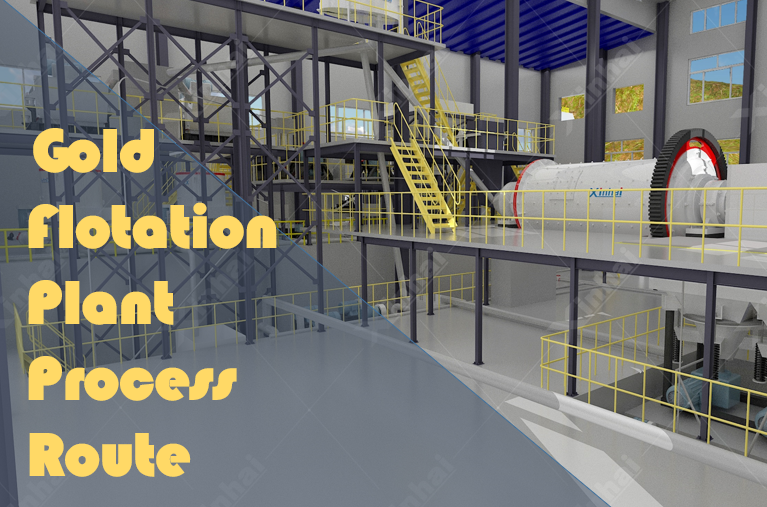Gold Flotation Plant Process Route
2024-08-01 Xinhai (1778)
2024-08-01 Xinhai (1778)
If you have any questions, please contact us through the following ways, we will give you more and better assistance!

Flotation is a key technology in mineral processing, especially for gold ore processing, it can effectively improve the gold recovery rate and concentrate quality. This article will summarize the flotation process route, covering the entire process from ore crushing, grinding, screening to flotation.
Crushing is the first step in ore processing, which uses mechanical force to reduce large pieces of ore to smaller particle sizes. This process is usually divided into one, two or three stages of crushing to meet the needs of plants of different sizes. The design of the crushing process needs to consider the hardness, moisture content and the desired final particle size of the ore.
Grinding is the further grinding of crushed ore to achieve a particle size suitable for flotation. The grinding process can be one or two stages, or even more, depending on the nature of the ore and the requirements of the beneficiation. After grinding, the slurry is graded by particle size through screening and classification equipment to prepare for subsequent flotation operations.
Screening is the process of separating particles of different sizes, which is achieved using multi-layer or single-layer sieves. There are various choices of screening equipment, including linear vibrating screens, resonance screens, fixed screens, etc. Each type of screening equipment has its specific application scenarios and efficiency.
Grinding and classification Grinding and classification is an important part of the mineral processing process. It optimizes the grinding efficiency and improves the effect of subsequent flotation operations by controlling the particle size distribution of the slurry. Types of grinding mills include ball mills, rod mills, gravel mills and autogenous mills, which use different grinding media to achieve fine grinding of ore.
Flotation Flotation, also known as froth flotation, is a mineral processing method based on differences in mineral surface properties. During the flotation process, by adding flotation agents, the floatability of the mineral is adjusted, so that the target mineral adheres to the bubbles and floats up, and the separation from the gangue mineral is achieved. The selection and use of flotation agents is the key to improving the flotation effect.

Formulation of process routes The formulation of process routes requires sufficient investigation and research, proposing multiple schemes, and analyzing and comparing them. The correct process route not only affects product quality and production efficiency, but also involves factors such as labor intensity, production cost, workshop area and equipment investment.
The flotation process and mineral processing facilities are developed synchronously. The technical level of the facilities directly affects the process level, which in turn has an important impact on the production process, product quantity, product quality and economic benefits.
The successful implementation of the flotation process depends on the meticulous management and technical optimization of each link. From crushing to grinding, to screening and flotation, each step needs to be adjusted according to the specific characteristics of the ore and the production needs of the factory. Through scientific process design and strict operation control, the flotation efficiency and product quality of gold ore can be maximized, and efficient utilization of resources can be achieved.
In actual operation, the factory needs to continuously optimize the process flow according to its own conditions and market changes, adopt advanced technology and equipment, and improve the level of automation and intelligence to adapt to the changing industrial needs. Through these measures, the gold flotation plant can ensure that it maintains its leading position in the highly competitive market and achieves sustainable development.